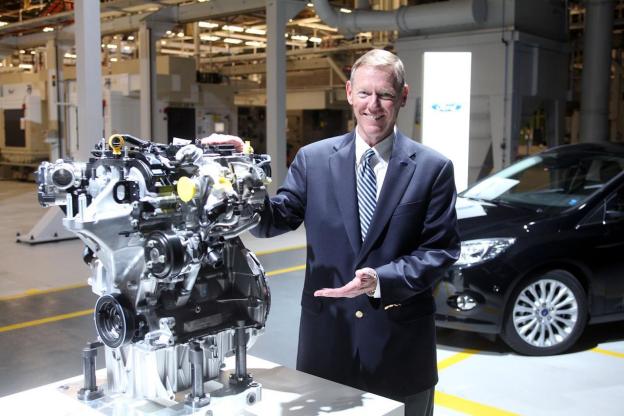 The push for more fuel efficient cars is driving some interesting partnerships among automakers that could pay off big for consumers down the road.
The push for more fuel efficient cars is driving some interesting partnerships among automakers that could pay off big for consumers down the road.
According to an Automotive News report, Daimler has been consulting with Ford in the development of a three-cylinder turbocharged gasoline engine that the German company is building with the French automaker, Renault.
The engine will reportedly be used for Renault’s next Twingo minicar and Daimler’s Smart ForTwo, reports the industry news source.
Ford’s turbocharged three-cylinder 1.0-liter EcoBoost gasoline engine, developed in the UK, is currently used in vehicles like the Focus, C-Max and Fiesta as well as the automaker’s B segment vehicles. The award-winning engine has received numerous accolades for its performance and low emissions including three 2012 International Engine of the Year swards, further positioning Ford as a global leader in engine technology.
“It’s a very interesting and impressive engine,” engine development director Roland Kemmler of Daimler subsidiary Mercedes-Benz told Automotive News Europe, discussing Ford’s three-cylinder engine. “We have had some discussions with Ford engineers about this engine.”
The direct-injection Ford engine, called a “technology breakthrough” by Ford President and CEO Alan Mulally when first launched, delivers a combined fuel economy figure of 58.9 mpg and best-in-class petrol CO2 emissions of 109g/km in the Ford Focus — due to its high-tech, low-friction design.

The collaboration between Ford, Daimler and Renault is the latest in a number of recent moves by the carmakers centered on sharing information to develop more fuel efficient cars. The companies have also been working jointly on the development of fuel cell vehicles as well, which some believe could prove to be more efficient than electric vehicles in the future as reported earlier.
It makes you wonder – what other shared technologies might Ford, Daimler and Renault be working on for future products?
Editors' Recommendations
- Daimler is taking a ‘reality check’ on self-driving cars over safety challenges
- Ford issues safety recalls for three vehicle models in North America


